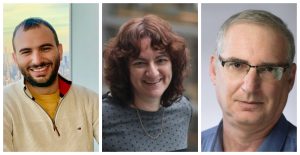Intel oneAPI Center of Excellence at the Technion
Technion is pleased to be recognized as an Intel oneAPI Center of Excellence to facilitate studies in contemporary scientific computing using the power of CPUs, GPUs, and other accelerators, with oneAPI cross-architecture programming
Leading the center are Dr. Gal Oren and Prof. Hagit Attiya from the Henry and Marilyn Taub Faculty of Computer Science at the Technion – Israel Institute of Technology, in collaboration with Prof. Danny Hendler from the Computer Science Department of Ben-Gurion University.
Using Intel’s oneAPI developer cloud, the center will offer a comprehensive course covering the fundamental and advanced possibilities of using oneAPI and OpenMP* for shared-memory parallelism, especially with accelerators. The center will lead in training the next generation of developers by promoting projects that will identify key open source HPC/AI applications and port them via oneAPI with OpenMP/SYCL. The center will open source the curriculum, offer train-the-trainer activities, localize efforts with other Israeli universities (such as Ben-Gurion university), and provide an online presence.
“We are excited to establish the new oneAPI Center of Excellence with Intel,” says Dr. Oren, who leads the venture. “As heterogeneous supercomputers worldwide are on the rise, and diverse high-performance computing is practically ubiquitous, there is a need to raise a new generation of developers who can push legacy and new-generation applications performance to the limit. With oneAPI, we can close the gap between software and hardware and exploit the full potential of both. The future, in this regard, is here, and we are planning to seize the moment.”
“Technion’s oneAPI Center of Excellence, the first in Israel, is an exciting step forward preparing students for a multi-architecture computing world by teaching them SYCL and oneAPI”, says Scott Apeland, senior director of Intel Developer Ecosystem Programs. “This oneAPI Center brings open, standards-based programming skills to students to innovate, drive research, and advance science and industry.”



